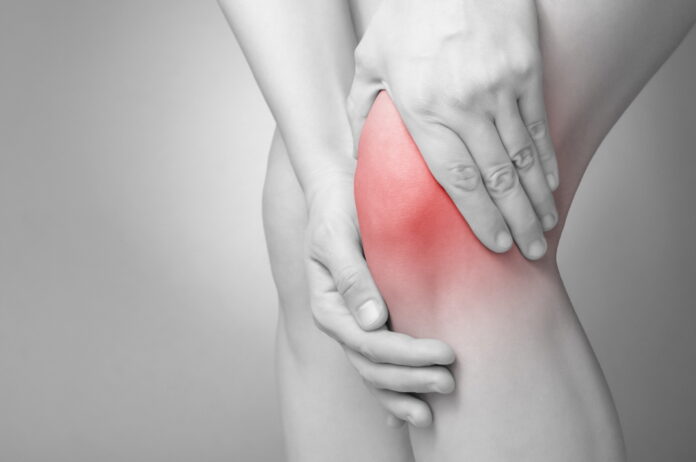
The Most Reliable Standard Protocol for Treatment of Various Symptoms
By Namwook Cho L.Ac.
Where do you find solutions if you have trouble treating certain symptoms? Or, If you are unsure which herbal formula to use to help your patient, what do you usually do to find an answer?
In South Korea, the government led the project to set standard protocols with major Korean medicine societies, and Korean medicine schools have developed standardized Eastern medicine protocols for each symptom seen in an Acupuncture clinic.
National Institute for Korean Medicine Development website (nikom.or.kr/engnckm/index.do) shows protocols ready to be spread to interested people. The protocols are written in Korean, but summarized information regarding the recommended Eastern Medicinal treatment methods is explained in English.
From August, Acupuncture Today will introduce each protocol monthly. The first of the series is for Osteoarthritis (OA).
A Standardized Treatment Protocol for Osteoarthritis (OA) in Eastern Medicine
Overview, Osteoarthritis, and Knee Osteoarthritis
Osteoarthritis (OA) is a non-inflammatory joint disease frequently seen in middle or old age, mainly in the articular cartilage of the hip and knee joints subject to weight load. The prevalence of OA is reported in about 50% of patients over 60 years old and about 70% in people over 65 years old.
It is the eighth leading cause of disability worldwide. Knee Osteoarthritis (KOA) is radiologically present in 33% of people over 60 years of age, which is more likely to cause disability.
Recommendations
The recommendations were expressed with combinations of the strength of recommendation/level of evidence. For example, if a modality is explained as B/Low, that would mean strength of recommendation if B is considered not strong but appropriated, and Low means a low level of evidence for the modality, respectively.
Manual acupuncture, which means without applying electroacupuncture, has shown significant pain relief, functional improvement (total), and improvement in the patient’s quality of life (physical health) for Knee Osteo¬arthritis patients compared to sham acupuncture or inactive control. Recommended acupuncture point selections are: EX-LE4, ST35, GB34, GB33, ST34, SP10, ST36, EX-LE2, BL40, and A-shi can be considered depending on the patient’s symptoms. (B/Low)
Add-on treatment with acupuncture with usual western care should be considered for pain relief, functional improvement (total pain, stiffness, physical function), im¬provement in the patient’s quality of life (physical health), and treatment effects in Knee Osteoarthritis patients. (B/Low)
Electroacupuncture has shown significant pain relief, functional improvement (total pain, stiffness, physical function), and improvement in the patient’s quality of life (physical health) for Knee Osteoarthritis patients compared to sham acupuncture or inactive control. Recommended acupuncture point selection is for electroacupuncture treatment: EX-LE4, ST35, SP10, ST34, GB34, SP9, ST36, etc. And Alternate stimulation of 2/15 Hz or 2/100 Hz may be considered. (B/Low).
Warm-needle acupuncture has shown significant functional improvement (total pain, stiffness, physical function) and improvement in the patient’s quality of life (physical health, mental health) for Knee Osteoarthritis patients compared to inac¬tive control. (B/Low)
Moxibustion has shown significant functional improvement (pain, stiffness, physical function) and improvement in the patient’s quality of life (physical health) for Knee Osteoarthritis patients compared to sham moxibustion. The meridians for moxibustion treatment are as follows: EX-LE4, ST35, EX-LE2, ST34, BL40, GB34, SP9, SP10, GB33, ST36, CV4, BL18, BL23, A-shi points can be considered. (B/Low)
Herbal medicine has shown significant pain relief, functional improvement (total pain, stiffness, physical function), and improvement in the patient’s quality of life (physical health) for Knee Osteoarthritis patients compared to placebo. Therefore, herbal medicine should be considered for Knee Osteoarthritis patients. knee osteoarthritis is categorized as supplementing liver and kidney yin deficiency and subducting blood stasis. Prescriptions can be primarily considered as follows: Samgieum (for warming coldness and removing pain in predominant cold syndrome), Daebangpungtang and Ojeoksan (for removing wind and pain in predominant wind syndrome), Changgwihwan (for removing dampness and pain in predominant damp syndrome), Palmiwon and Dokwhalgisaengtang (for supplementing liver and kidney in liver and kidney deficiency syndrome) can be considered as the primary choice. Daeganghwaltang (in arthritic pain, edema, and rigidity). (B/Low) (Referred National Institute for Korean Medicine Development, NIKOM)





































